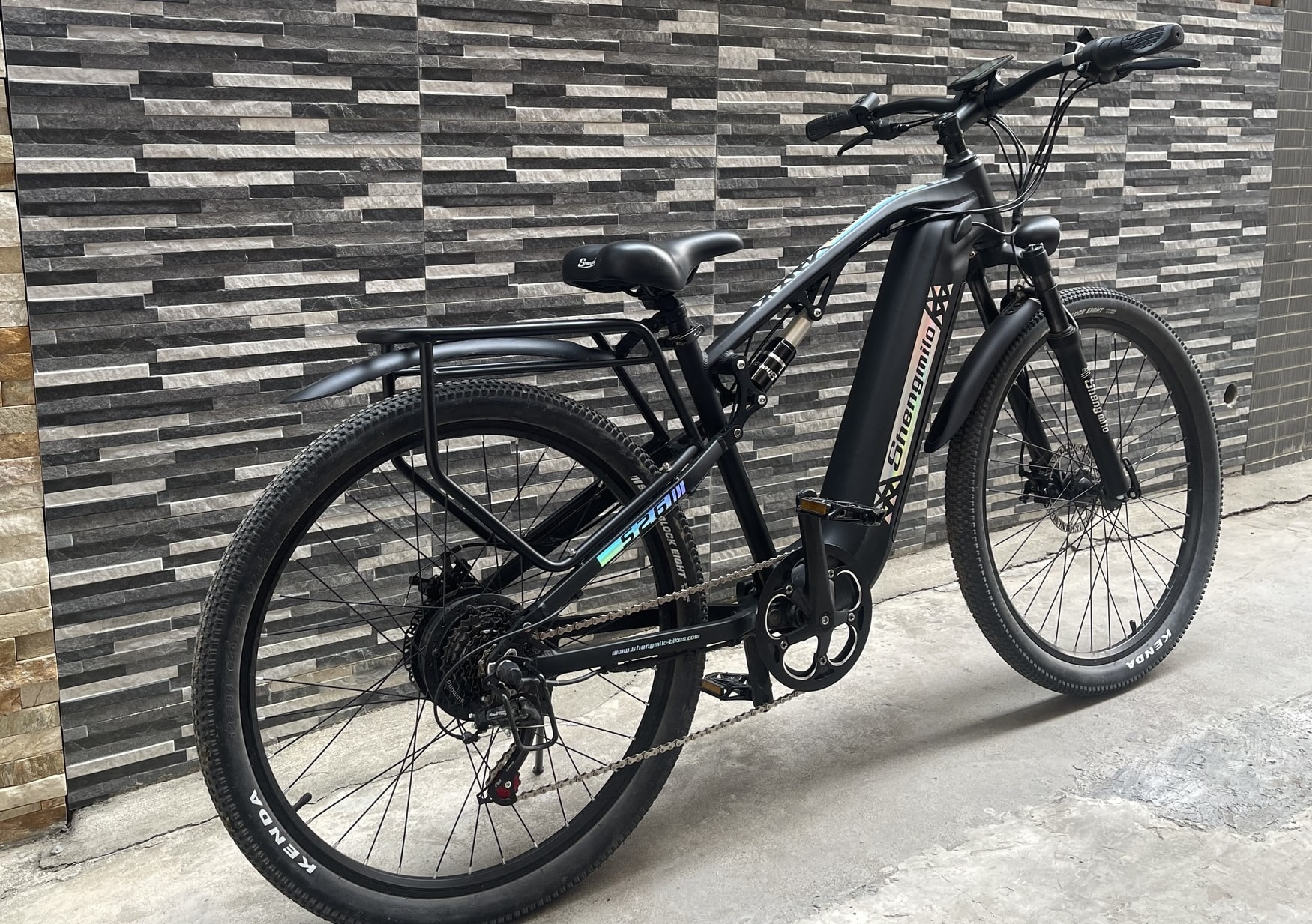I am entirely on board with a healthy dose of skepticism for ebike specs, especially when giving advice to folks that are not-yet-bicycling. This article does indeed describe an ebike with suspect specs, but I also think the author is a little bit too alarmist.
The S26 is the only one sitting on 27.5x2.1-inch tires, and this is really where I feel the S26 starts to fall apart in terms of a solid e-MTB. Those tires just look a little out of place in comparison with the rest of the frame.
I may be mistaken, but 27.5" are perfectly normal for MTBs. Sure, lots of riders are wearing 29ers – this video appears to review a Trek Fuel EXe with 29" tires – but the overall proportions don’t seem hideously out of place for MTB.
I suppose when most ebikes being reviewed tend to be fat-bikes or cargo bikes, an eMTB is going to look a bit distant from the norm. But fatbikes =/= MTB. To generalize a bit, fatbikes tires need huge contact patches to grapple for purchase on mud and snow, while MTB tires need speed and grip on firmer yet loose terrain, like gravel and packed dirt trails.
The downtube is so disproportionate to all the other tubes that I could tell you precisely where this bike would break if you were ever to crash on it.
This is a strange comment. Yes, ebikes have huge down tubes, but if I’m crashing a bicycle, frame damage is hardly at the top of my list of present considerations. If anything, I care more about the bike’s overall geometry, which ideally would let me steer away from a crash outright. Plus, I’m concerned what the author thinks about step-through frames, which have no top tube at all to break!
with the rear shock being connected to the top tube
Credit where it’s due, this seems fairly unorthodox.
this bugger is equipped with nothing more than mechanical disk brakes… but Shengmilo mentions that the Bafang motor can attain a top speed of 42 kph (26 mph), and that’s just not safe if you ask me.
With ebikes capable of far higher speeds than the Class 3 limit of 45 kph (28 mph) already on the market that also use mechanical disc brakes, this concern seems unfounded. There is nothing inherently unsafe about mechanical disc brakes compared to hydraulic disc brakes, and they have different failure mechanisms (hydraulic leak vs cable breakage).
What would support a claim of safety implication is that this ebike – from only the pictures, as the manufacturer doesn’t list the rotor diameter – appears to have a 160 mm front rotor. That’s fine for acoustic bikes, but to prevent overheating on steep downhills or quick stops on an ebike, a 180 or 203 mm rotor might be preferred. But the author doesn’t discuss this aspect at all.
Imagine one of those cables coming loose or snapping while you’re trying to stop a 300 kg (661 lbs at full load) machine to a halt.
We could imagine that, but brake cable failure is already very rare for normally maintained bicycles, electric or otherwise. As I alluded to above, if this ebike had hydraulic disc brakes, I’d be more concerned about the brake fluid boiling over, because of the small rotors being unable to dissipate enough heat. Do I think this bike can actually carry 300 kg? Good heavens, no. But that’s a practical riding issue, not a safety issue. Mechanical brakes are not obsolete and I don’t appreciate the suggestion otherwise.
I may be reading too much into this, but the author is coming across as somewhat pretentious. That a no-name brand can’t produce an alright ebike. For heaven sakes, it’s $1400 USD. Here in California, you cannot get a quality ebike from a local dealer (with warranty and support) for anything less than $1100. Of course there’s going to be tradeoffs for an eMTB priced at $1400.
I want to see more ebikes in this country, since I believe there’s so much benefit to be had. I like seeing what novel ebikes manufacturers will build, and how people use their ebikes in clever ways. I want to see ebikes get cheaper so more people can enjoy them. At the same time, I want these people to be safe, where their batteries won’t explode overnight or be made from awful, proprietary parts. Accordingly, I think snobbery has no place in the ebike discussion, when there are genuine technical and legislative issues that are more pressing.
Overall, I’m not exactly running out to buy this ebike, given the decisions the manufacturer had to make for that price point. But I can see this being useful to someone out there. Moreso, I’m also not impressed by how the author framed the review, omitting more relevant details to potential customers and basically being an anti-cheap ebike rant.
Thanks for the detailed discussion. My bike uses caliper brakes because that’s what it came with when I bought it cheap used. Loaded downhill performance is concerning because of low braking force and fear of the bike tipping over forward pivoting on the front wheel.
Imagine one of those cables coming loose or snapping while you’re trying to stop a 300 kg (661 lbs at full load) machine to a halt.
I don’t see how that’s any more likely or worse than hydraulics leaking?



